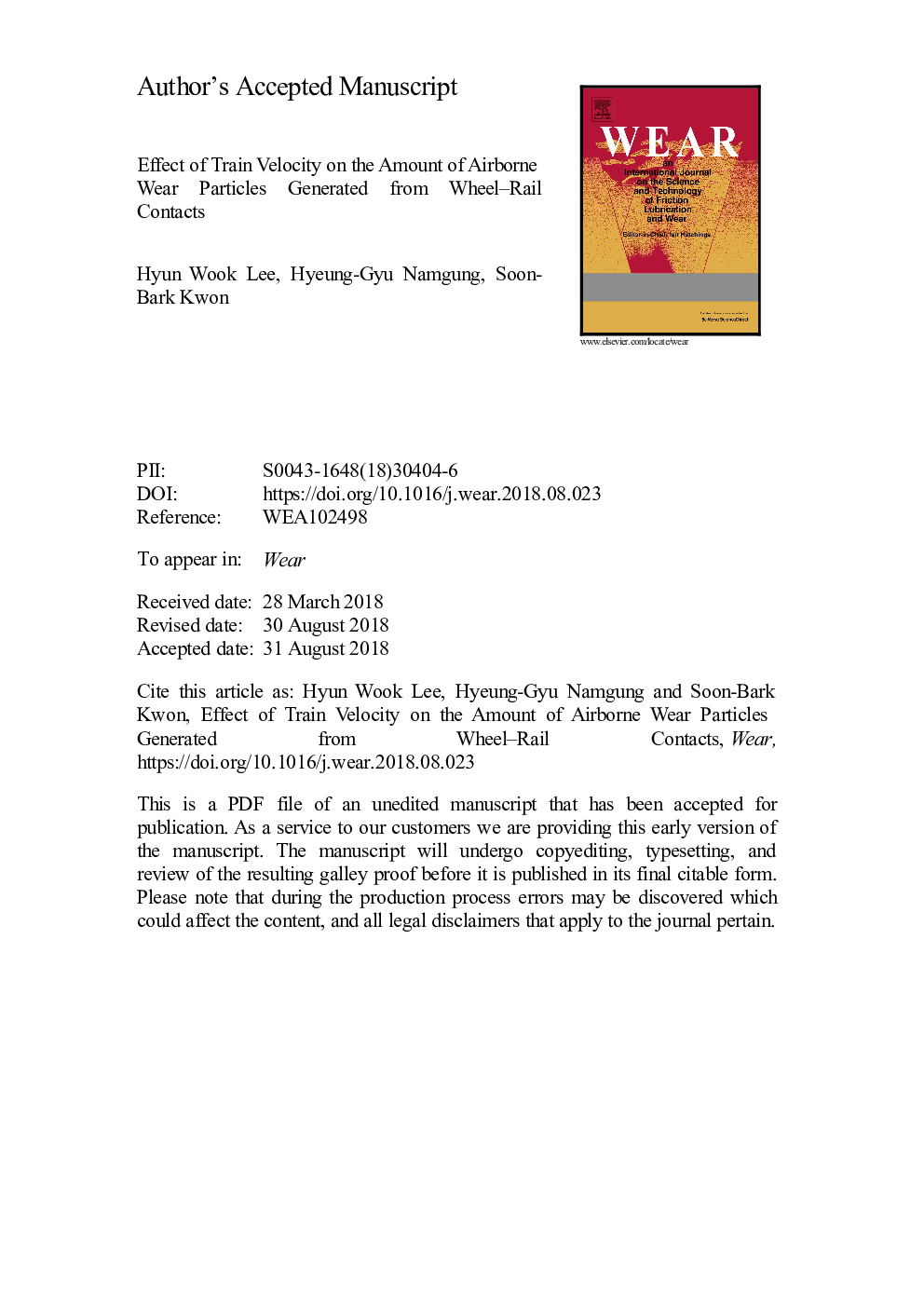| Article ID | Journal | Published Year | Pages | File Type |
|---|---|---|---|---|
| 9952585 | Wear | 2018 | 25 Pages |
Abstract
Railways are considered as an environment friendly transport system. However, railway transportation produces airborne wear particles (AWPs) from the brake systems, wheel-rail contact, contact-strip-overhead-contact-wire contact, and third-rail contact, which have adverse effects on human health. The generation of AWPs from wheel-rail contact has hardly been studied. In this study, we used a twin-disc rig to investigate the generation of AWPs from both rolling/sliding and pure sliding contacts at different train velocities. AWP number concentrations (AWPNCs) were measured at three different train velocities, i.e., 28, 45, and 90â¯km/h. The measurement was done using two particle counting instruments, a fast mobility particle sizer (FMPS) that measures particles in the range of 5.6-560â¯nm and an optical particle sizer (OPS) that measures particles in the range of 0.3-10â¯Âµm. AWPNCs were analyzed as a function of slip rate. AWPNCs measured by both the instruments and by FMPS continued to increase with slip rate at 28 and 45â¯km/h, respectively. AWPNCs measured by OPS and by both instruments increased during a rolling/sliding contact and then decreased during a pure sliding contact at 45 and 90â¯km/h, respectively. The total and maximum AWPNCs measured by both instruments increased with an increase in the train velocity. Furthermore, size distribution analysis showed that the AWPNCs for the peak particle diameter increased with an increasing train velocity. These results indicate that train velocity has a significant effect on the generation of AWPNCs.
Related Topics
Physical Sciences and Engineering
Chemical Engineering
Colloid and Surface Chemistry
Authors
HyunWook Lee, Hyeong-Gyu Namgung, Soon-Bark Kwon,
